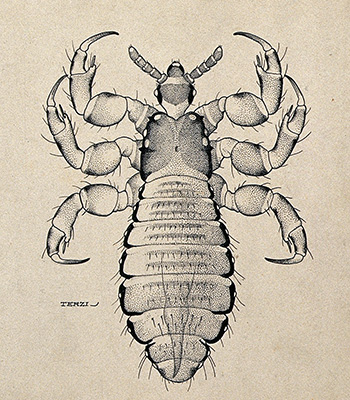Lice were a persistent problem in the trenches of WWI, significantly affecting soldiers' comfort and health. For Scottish soldiers, the issue was particularly acute due to their distinctive uniforms, which included kilts. This page will dive into the impact of lice on Scottish soldiers and the unique challenges they faced due to their attire.
The Problem with Lice
Lice were a common nuisance in the trenches, thriving in the dirty and crowded conditions. The infestation was exacerbated by the lack of proper hygiene and the soldiers' close quarters. For Scottish soldiers, wearing kilts added an extra layer of difficulty. The kilts provided additional places for lice to hide and breed, making them particularly problematic.
Scottish soldiers often experienced severe discomfort due to lice. The parasites would infest not only their clothing but also their skin, causing intense itching and irritation. The combination of the trench environment and the unique features of Scottish uniforms made lice control a significant challenge.

Kilts and Lice: A Unique Challenge
The kilt, while a traditional and proud part of Scottish military dress, contributed to the lice problem in several ways. The kilt's pleats and layers created additional hiding places for lice, which were difficult to inspect and clean thoroughly. This issue was compounded by the difficulty of washing and maintaining the kilts in the trench conditions.
Scottish soldiers found that lice infestations were more severe than for their counterparts wearing standard trousers. The added layers of the kilt, combined with the trench's unsanitary conditions, created an ideal environment for lice to thrive. This led to greater discomfort and health problems for Scottish troops compared to those in other units.
Measures Taken to Combat Lice
Efforts to combat lice included the use of insecticidal powders and frequent changes of clothing when possible. Soldiers would also try to clean their kilts as best as they could, though the harsh conditions of trench life made this challenging. The process was labor-intensive and only partially effective in controlling infestations.
Despite these efforts, lice remained a persistent issue throughout the war. Scottish soldiers had to endure the added discomfort of lice infestations along with the other hardships of trench warfare. The unique challenges posed by their kilts highlighted the broader difficulties faced by soldiers in maintaining personal hygiene and health during World War I.
Conclusion
The problem of lice in the trenches was a significant aspect of the harsh reality of World War I. For Scottish soldiers, the issue was exacerbated by their distinctive kilts, which created additional challenges in controlling lice infestations. Understanding the impact of lice on Scottish troops provides insight into the broader struggles of trench life and the unique difficulties faced by soldiers with different uniforms and equipment.
